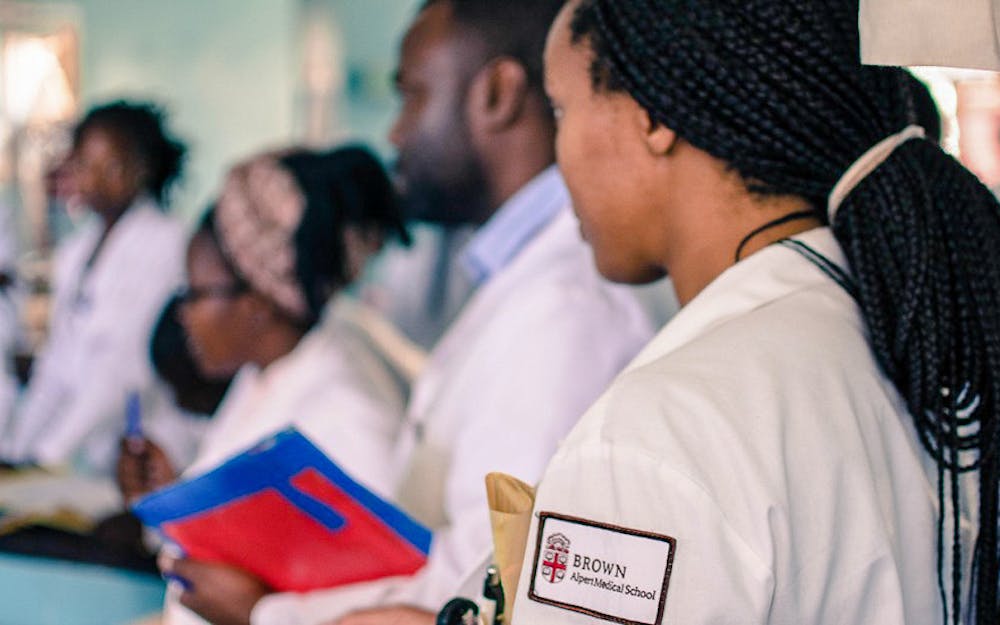University researchers specializing in biostatistics were awarded two grants from the National Institutes of Health, amounting to $4.6 million over five years, according to a recent press release from the Warren Alpert Medical School. The first grant will fund work to develop machine-learning tools to improve care of HIV patients while the second grant will fund Phase 2 of NAMBARI, a program the researchers have worked on for several years now that trains Kenyan students and faculty members in biostatistics and research.
The Academic Model Providing Access to Healthcare Program consists of a “consortium of North American universities that are engaged in research care and training programs related to HIV in Kenya,” said Joseph Hogan, the principal investigator of the study and a professor of public health and biostatistics at the University. AMPATH’s main collaborator is Moi University in Kenya.
When the program began in the mid-2000s, researchers at Indiana University and Moi University began collecting patient data in an electronic health record system, Hogan said. Because of these efforts, “we have basically fifteen years of longitudinal data on a population of people with HIV in the western part of Kenya … which has been an important source of research,” he added.
The researchers at AMPATH aim to achieve the 95-95-95 target developed by the Joint United Nations Programme on HIV/AIDS, which they claim will bring about the end of the AIDS epidemic by 2030. Under this target, researchers aim for at least 95% of people to know their HIV status, 95% of HIV-positive people to be on treatment and 95% of HIV-positive people to respond to treatment with their viruses suppressed, Associate Professor of Medical Science Hamish Fraser said.
“We are working within the second 95 and the third 95,” said Ann Mwangi, co-principal investigator of the study and associate professor of biostatistics at Moi University. The second goal of the 95-95-95 target — providing therapy — is complicated by patients who do not continue therapy for a long period of time.
To address this issue, the study plans to develop data-driven algorithms that can identify people who are “at high risk for dropping out of care and off their treatment regimen.” By identifying these high-risk patients early-on, clinicians can take measures to aid the patient in continuing treatment such as calling the patient or visiting the patient’s home.
The team also plans to identify indicators of high viral load in patients and use predictive analytics to measure HIV progression in individuals who do not have access to regular viral load measurements. “If we know they have a high viral load, we can reevaluate their treatment regime, (and) we can make sure they're taking their treatments,” Hogan said.
“If you’re an HIV patient in the US, you might have your viral load measured every three months or every six months,” Hogan added. “But in Kenya and other places, … it might be only once a year that your viral load gets measured.”
An important component of this work is “collaborating with people who specialize in informatics” to integrate the machine-learning tools with the electronic health records of patients, Hogan said.
Fraser is one of the original developers of OpenMRS, the medical record system that AMPATH uses. He will lead the development of the user-interface system used at the point of care by “upgrading OpenMRS with a new user interface and improving the decision support system,” Fraser said. In the case that there are problems that need to be addressed, such as “starting a new treatment or organizing a lab test to monitor a patient’s condition,” the system will “pop up an alert or warning to remind clinicians,” Fraser said.
The study’s machine-learning goals will help build a much more advanced version of the electronic health record that will be able to “predict which patients are likely to have problems with their care, particularly if they’re likely to stop being followed up or if their treatment is likely to fail,” Fraser said.
The second NIH grant is a renewal of a training grant called NAMBARI — a Swahili word for numbers representative of the team’s slogan “help through numbers.” The funds from this grant go towards programs “designed to train Kenyans in biostatistics and to increase the capacity of Moi University to do research and biostatistics,” Hogan said.
The training program has three components: the first provides biostatistics and research training for Kenyan students, the second is a faculty fellowship, in which faculty from Moi University spend a semester at Brown, and the third is a week-long training workshop for professional statisticians in Kenya.
This work is made possible by a long-standing relationship between the University and Moi University. “Over the years we've had five students from Kenya who have come to Brown for two years and gotten their master's degree in biostatistics,” Hogan said. “Then they returned to Kenya and joined the research team at Moi University.”
The training program is designed to make a difference in “research colonialism.” Though researchers often collect data in sub-Saharan Africa, many take it back to their home institutions for analysis because the analytical capacity hasn’t always existed in sub-Saharan African institutions, Hogan said.
“This angle of helping to build capacity in Africa is really commendable,” Mwangi said. “The problems are in developing countries, so shifting the gravity to ensure that we have people who understand their problems and can be able to solve their problems, … to me, is a big thumbs up.”





